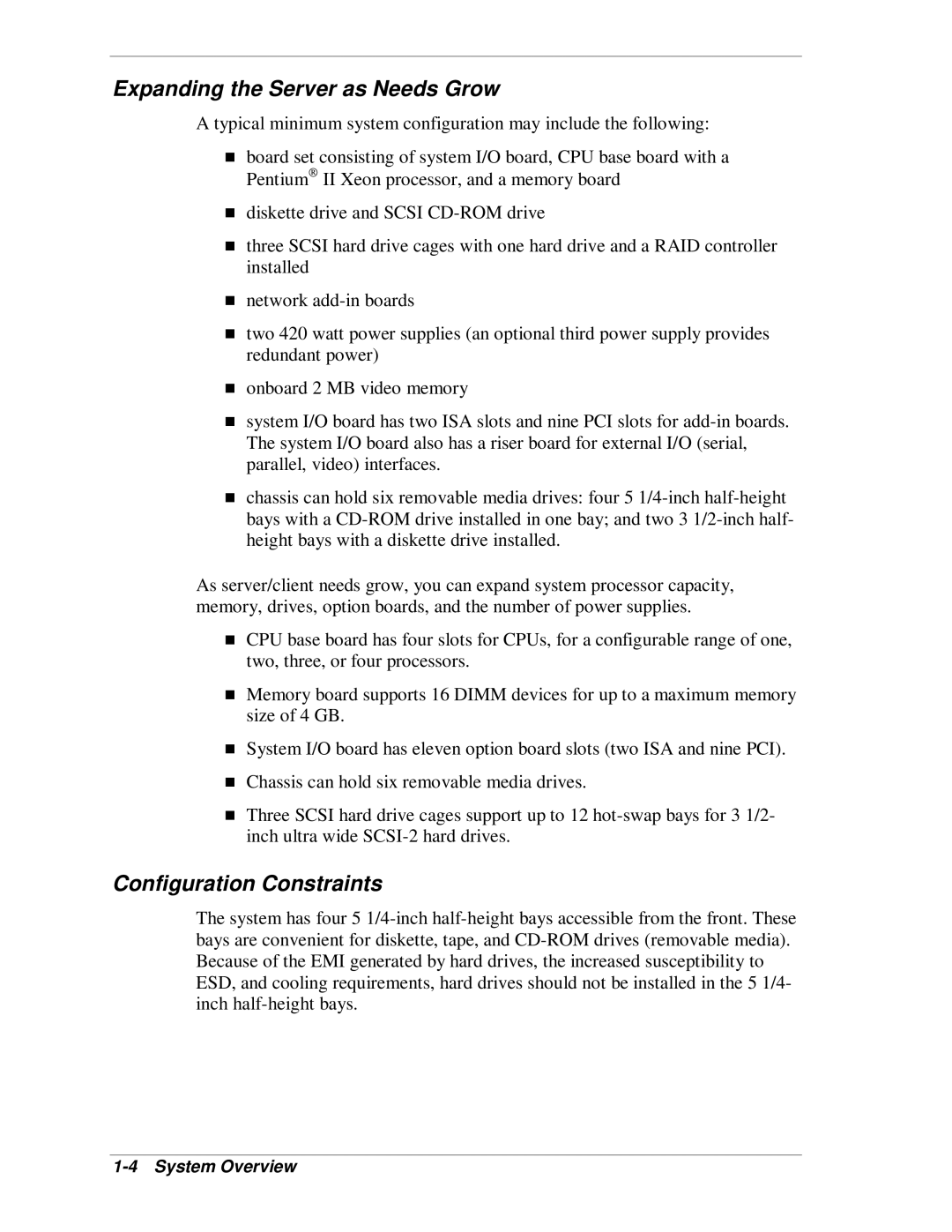
Expanding the Server as Needs Grow
A typical minimum system configuration may include the following:
board set consisting of system I/O board, CPU base board with a Pentium® II Xeon processor, and a memory board
diskette drive and SCSI
three SCSI hard drive cages with one hard drive and a RAID controller installed
network
two 420 watt power supplies (an optional third power supply provides redundant power)
onboard 2 MB video memory
system I/O board has two ISA slots and nine PCI slots for
Tparallel, video) interfaces.
chassis can hold six removable media drives: four 5
As server/client needs grow, you can expand system processor capacity, memory, drives, option boards, and the number of power supplies.
CPU base board has four slots for CPUs, for a configurable range of one, two, three, or four processors.
Memory board supports 16 DIMM devices for up to a maximum memory size of 4 GB.
System I/O board has eleven option board slots (two ISA and nine PCI).
TChassis can hold six removable media drives.
Three SCSI hard drive cages support up to 12
Configuration Constraints
The system has four 5
